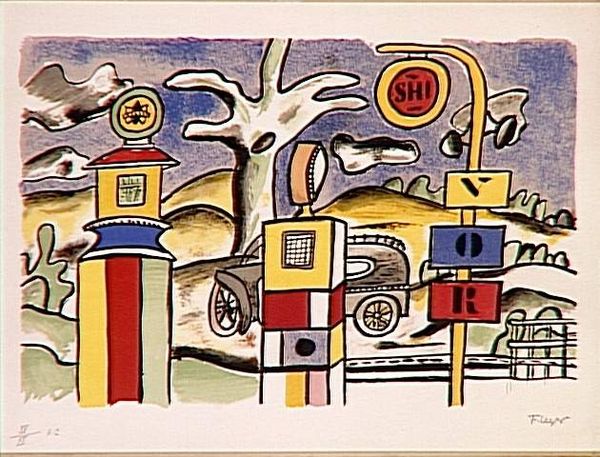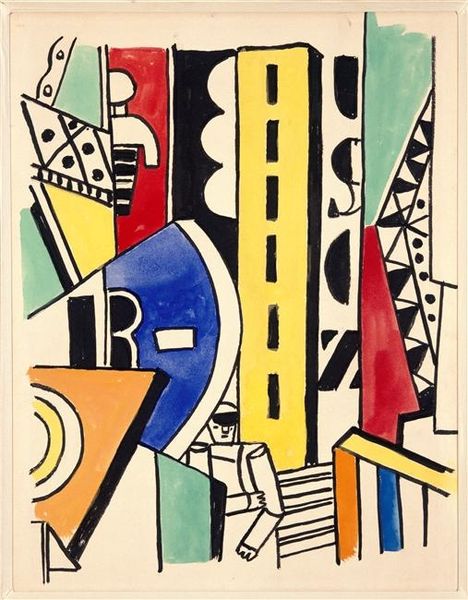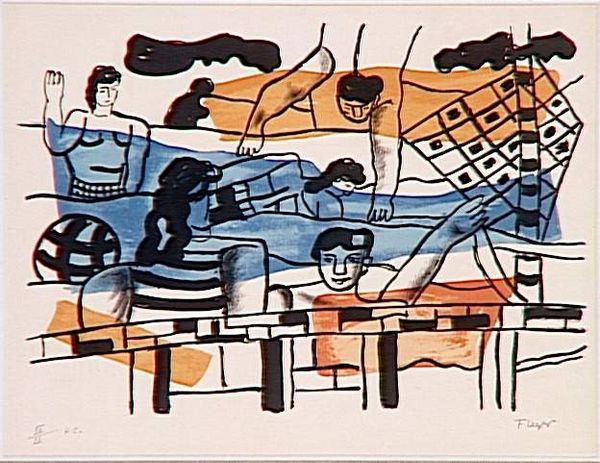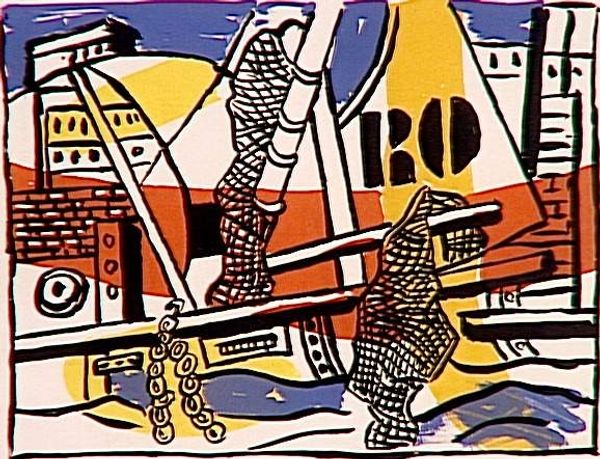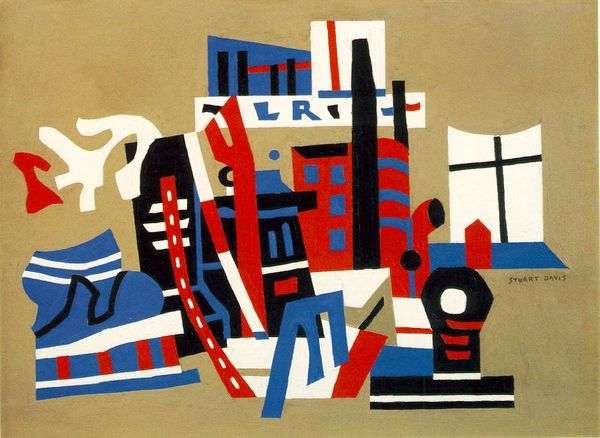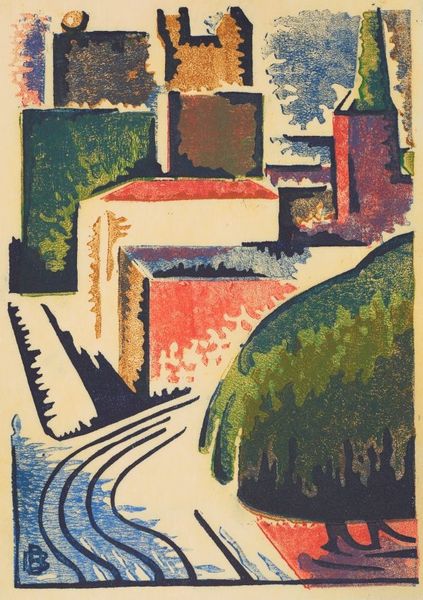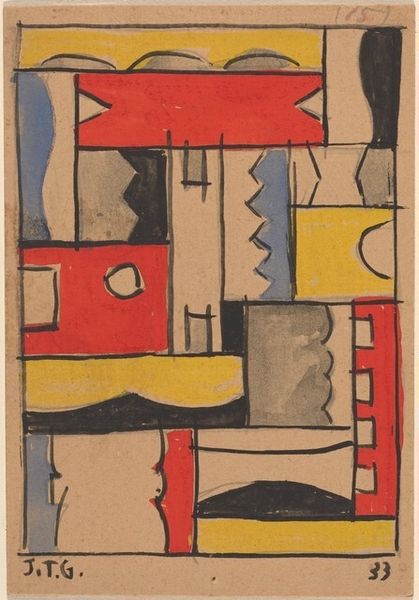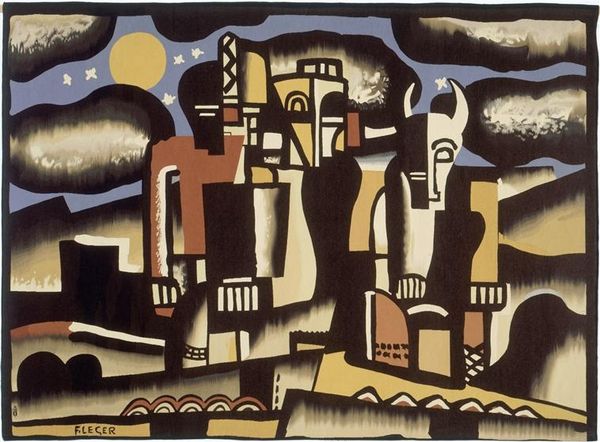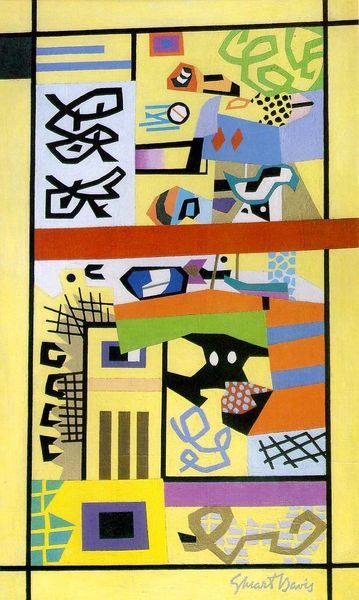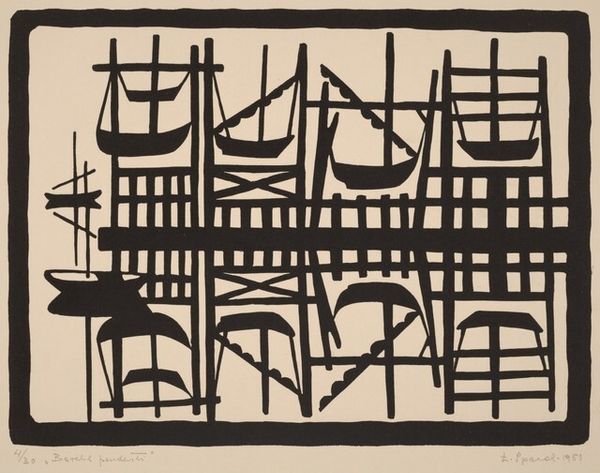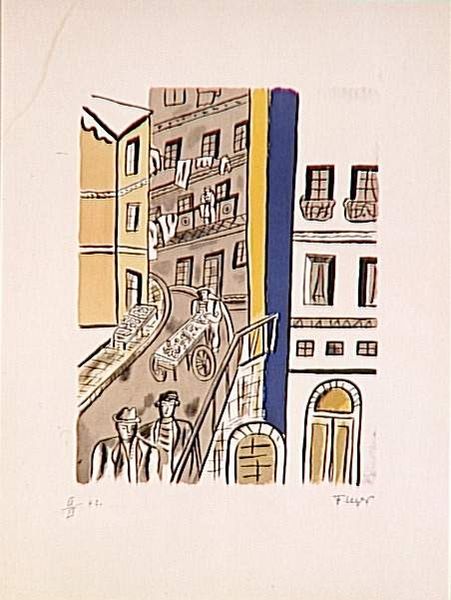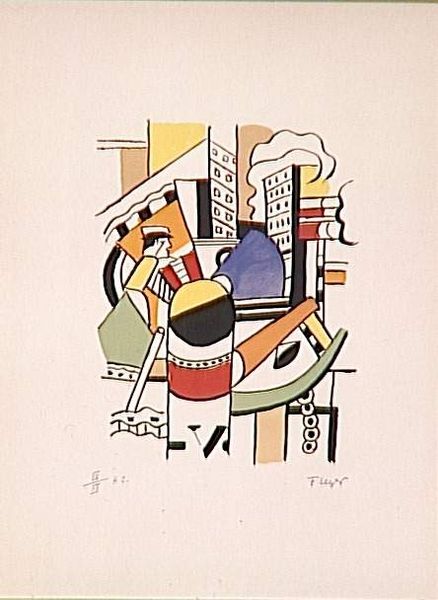
painting
#
cubism
#
painting
#
pop art
#
house
#
geometric
#
sketch
#
abstraction
#
line
#
cityscape
#
modernism
#
building
Copyright: Fernand Leger,Fair Use
Editor: We're looking at "The Viaduct" by Fernand Léger, currently housed in the Musée National Fernand Léger. It’s a painting dominated by bold lines and geometric shapes, a really striking composition. What’s fascinating me is its kind of playful take on an industrial landscape. What's your interpretation of it? Curator: Well, looking at "The Viaduct," it's vital to consider Léger’s engagement with the machine age. He was fascinated by industrial forms, weren't all the Futurists?, but Léger diverged somewhat and incorporated them into his compositions not as symbols of speed and dynamism, but more in juxtaposition to organic, even cartoonish elements. Note that the viaduct seems almost a child's construction! What statement do you think he's making? Editor: Hmm, are you suggesting he is critiquing the way society views the balance of technology and nature? Maybe the "child's construction" quality deconstructs the supposed inherent superiority of industrial progress? Curator: Precisely. He's also playing with the conventions of public art. Is it possible that what appears simplistic on the surface is instead challenging academic and institutional norms, presenting a "democratic" aesthetic that everyone can access? The boldness of the colour certainly speaks to this. Do you see parallels with the Bauhaus movement perhaps? Editor: I see what you mean. The simplified forms and flat colours are somewhat reminiscent. So he’s not just representing a cityscape, he's making a statement about how art should engage with everyday life. And about who gets to define 'good' art. It's much more complex than I initially thought. Curator: Indeed! By democratising both the subject and style, Léger prompts us to question the social function and control of art itself. Something which remains important today, wouldn’t you say? Editor: Definitely. It gives me a lot to consider regarding the power dynamics within art and its ability to engage wider audiences.
Comments
No comments
Be the first to comment and join the conversation on the ultimate creative platform.
